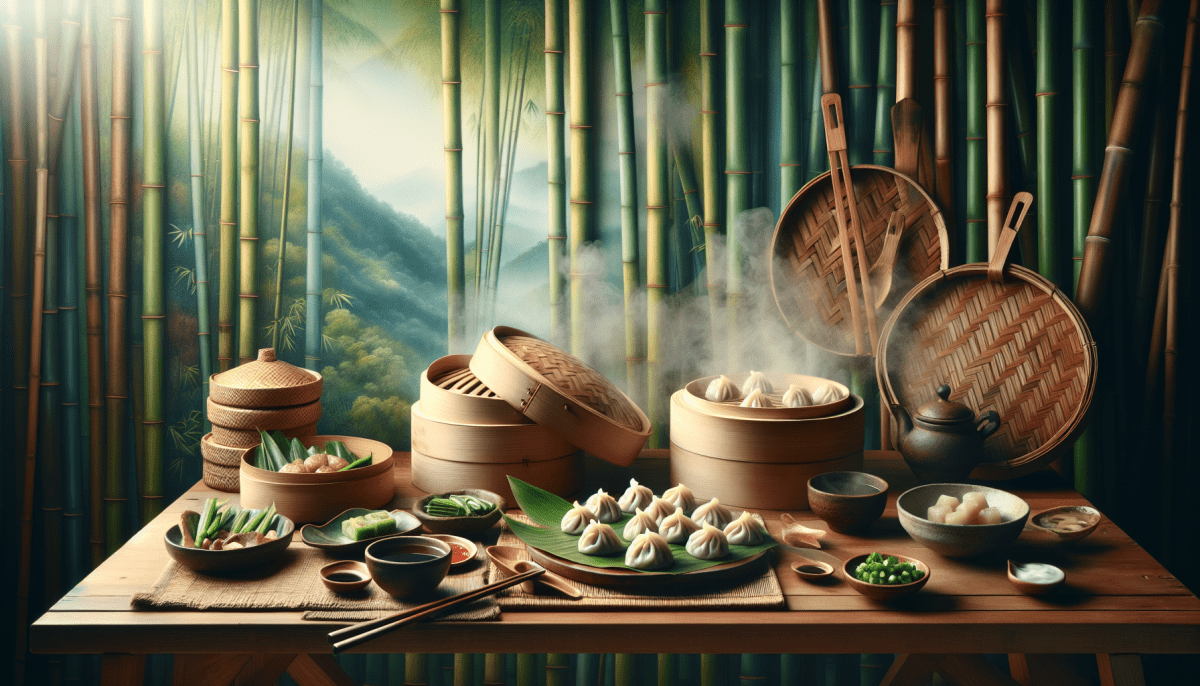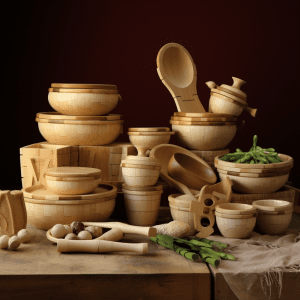Bamboo, a versatile plant used in various industries, has also made its mark in the culinary world. Its unique taste and texture have the potential to transform ordinary dishes into extraordinary culinary delights. Chefs and food enthusiasts are increasingly experimenting with bamboo in their recipes, discovering new dimensions of flavors and textures that can elevate any dish to a whole new level.
One of the reasons why bamboo has gained popularity in enhancing taste is its ability to absorb flavors. The porous nature of bamboo allows it to absorb the flavors of marinades, spices, and sauces, infusing the dish with an intensified taste profile. Whether used in a stir-fry, as a skewer for grilling, or as an ingredient in soups or stews, bamboo imparts a subtle earthy undertone that enhances the overall flavor of the dish.
Another remarkable aspect of bamboo is its unique texture. Bamboos shoots, often used in Asian cuisines, provide a delightful crunch and firmness that adds a desirable textural contrast to dishes. Whether pickled, steamed, or sautéed, bamboo shoots retain their crispiness, offering a pleasant mouthfeel in every bite. Additionally, the fibrous texture of bamboo can add depth and complexity to dishes, making them more interesting and enjoyable.
The Subtle Whispers of Bamboo: A Culinary Journey
Bamboo, with its slender stalks and delicate leaves, holds within it a wealth of culinary wonders. Across different cultures and regions, chefs and home cooks have tapped into the subtle whispers of bamboo to enhance the taste and texture of their dishes. From bamboo shoots to bamboo leaves, this incredible plant has left an indelible mark on the world of gastronomy.
The influence of bamboo on taste and texture can be experienced in a myriad of ways. One of the most popular uses of bamboo in cuisine is through bamboo shoots. These tender and delicious shoots, often used in stir-fries and soups, offer a crisp texture and a subtly sweet flavor. Their unique taste balances and complements a wide range of ingredients, adding depth and complexity to every dish they grace.
Another culinary gem concealed within bamboo lies in its leaves. Aromatic and tender, bamboo leaves are commonly used as natural wrappings for steaming or grilling. As heat kisses the leaves, it infuses the food within with a subtle earthy fragrance, unveiling flavors that are difficult to replicate by any other means. Bamboo leaves not only enhance the taste of the ingredients within but also impart a moist and tender texture that truly delights the palate.
From the enchanting bamboo forests of Asia to the kitchens around the globe, the influence of bamboo on taste and texture of food has woven itself into the culinary tapestry of countless cultures. As we continue to explore and appreciate the subtle whispers of bamboo in our gastronomic adventures, let us embrace the remarkable role this unassuming plant plays in elevating our dining experiences.
Bamboo's Hidden Impact: Unveiling New Flavors and Textures
Bamboo, traditionally associated with sturdy structures and cute pandas, is gaining recognition for its unique influence on the taste and texture of food. While it may come as a surprise to many, bamboo shoots and leaves have been utilized for centuries in various Asian cuisines, adding a delightful twist to dishes. Not only do they possess a distinctive flavor, but they also introduce a pleasing crunch and an array of health benefits.
The distinctive taste of bamboo shoots can best be described as a delicate combination of mild sweetness and earthiness. Its subtly sweet undertones make it a versatile ingredient that can be incorporated into various savory recipes, including stir-fries, soups, and curries. Furthermore, the tender young bamboo shoots provide a contrasting texture that adds an enjoyable crunch to any dish, making them a popular addition in salads or spring rolls.
Aside from their culinary significance, bamboo shoots offer numerous health benefits. Rich in dietary fiber, they aid in regulating digestion and promoting a healthy gut. Additionally, bamboo shoots are low in calories and contain essential nutrients such as potassium, vitamin E, and various antioxidants. These nutritional qualities make bamboo an ideal ingredient for those seeking a balanced and health-conscious diet.
From Bland to Exquisite: Embracing Bamboo's Flavorful Possibilities
Bamboo has become increasingly popular in the culinary world due to its unique taste and texture. This versatile ingredient has the ability to transform ordinary dishes into extraordinary culinary experiences. With its subtle yet distinctive flavor, bamboo offers an exquisite addition to a wide range of cuisines, particularly in East Asian and Southeast Asian cooking.
One of the key characteristics of bamboo is its tender and crunchy texture, which adds a delightful element to various dishes. It can be sliced into thin strips or diced into small cubes, making it an ideal ingredient for stir-fries and salads. The crisp texture of bamboo perfectly complements the softness of other ingredients, creating a satisfying medley of flavors and textures in every bite.
Bamboo's flavor profile is often described as mild, earthy, and slightly sweet. When cooked, it absorbs the aromas and flavors of the surrounding ingredients, enhancing the overall taste of the dish. Bamboo is commonly used in broths, soups, and various stir-fried dishes, as it imparts a refreshing and delicate taste that balances well with other ingredients.
Furthermore, bamboo is also highly nutritious, packed with vitamins, minerals, and dietary fiber. It offers numerous health benefits, including improved digestion, lower cholesterol levels, and reduced risk of certain diseases. By incorporating bamboo into your diet, you not only elevate the taste of your meals but also boost their nutritional value.
4.38 out of 5 starsBamboo Cookware
Sustainable and Stylish Cookware to Elevate Your Kitchen Experience
Product information
Product Review Score
Product links



